by Wallace Wyss –
Now I’d like to preface my capsule history of this car, aka The Egg, with the remark that: beauty does not guarantee a big sales price, nor does a big name coachbuilder.
In this case the Ferrari in question was ugly as sin (well, its mother could love it) and the coachbuilder, Fontana, well, who heard of them?
Yet in 2017 it sold for a huge amount for such an obscure car that had never appeared at any concours in its entire life.
The car was a family affair, because back in the late 1940s and early 1950s, the four Marzotto brothers – Vittorio, Giannino, Paolo, and Umberto—were making a name in racing. They had the driving talent and, oh, did I mention they were rich?
When the marque was first shaping up, this is the customers they liked, repeat customers, who would buy not one but several Ferraris.
One of them, Count Giannino, did especially well, by taking first overall in the Mille Miglia not just once but twice. And he was a man of style, taking the Mille Miglia in 1950 while wearing a double-breasted brown suit, showing that Ferraris were cars that could be driven by gentlemen.
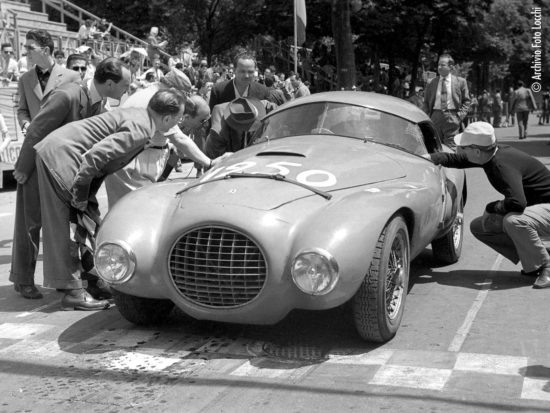
When you sell a race car, it’s good to have a long string of events from back in the day in its resume
Enzo didn’t really get along with him but they were both type A personalities.
Out of the twenty-some Ferraris that the brothers owned, this one,024MB, which rolled out the factory door February 2, 1950 had its first run at the Targa Florio, but DNF’d due to a clutch problem. It was then entered in the Mille Miglia with Umberto (and co-driver Franco Cristaldi) at the wheel but crashed and had to be rebuilt at the factory.
Giannino thought, hey, let’s rebody it, going for ultimate aero. Hence the “egg” motif and to hell with the way Touring would do it. A famous sculptor, Franco Reggiani, was retained, and his body was truly aero though it, uh, takes a little getting used to. The body has Peraluman plates, which must be some lightweight metal, since it tipped the scales a hundred and fifty kilos lighter than similar Ferraris of the time. It also was fitted with twin shock absorbers and a regulator for its Formula 2 brakes.
The gas tank was humongous–a 156-liter gas tank that would get it down the road 550 kilometers. The windshield was as upright as possible and was made from crystal (not sure how that would react if you hit it…)
Marzotto’s only complaint was that the bonnet was too high because the factory failed to deliver the lower radiator that was from a single seater.
Enzo’s input was confined to recommending the placement of the driving position far back so the driver could feel the tail moving, and thought the penalty for this was severe oversteer.
Its first race was the Giro di Sicilia, still in bare aluminum – another DNF because of a broken O-ring in the differential.
After two DNFs knocked it out of the Giro di Sicilia and the Mille Miglia it won glory by taking first at another race, the Giro della Toscana, and that was enough for Giannino to phase out racing. The next year he ran only twice. He was a generous soul, loaning the cars of Scuderia Marzotto to friends to run, the name kept in order to keep the family name known in racing.
It did return to the Mille Miglia in 1952 with two friends piloting, and ran in the top ten before DNFing.
Donate to My Car Quest – Click Here
It went to a few more Italian events, and then just when Marzotto was going to drive it in the ‘53 Mille Miglia, he switched to a 340MM and the car was shipped in late 1953 to Mexico, for Carrera Panamericana. But alas there’s no record the car ran, and the Marzotto brothers returned to Italy leaving the car in Mexico.
A Mexican bought the car and resold it to Ignacio Lozano of Newport Beach, California, who was the publisher of La Opinion, an important Spanish language newspaper based in Los Angeles. Lozano was, in buying that car, switching over from British cars. He raced it at several California events, including Torrey Pines, Pebble Beach, Bakersfield, and Willow Springs, in 1954.
The car went to a famous SoCal racer Pete Lovely, before being sold on to Dave Andrews and subsequently Harvey M. Schaub of Sun Valley, California, in 1964, who began the long process of restoration. Harvey’s wife sold the car after his death to noted Ferrari dealer and historian Ed Niles in 1982. Was the car drivable on the street? Well, when it was bought by Jack du Gan, he jumped in and took it across the whole U.S., to Florida.
Back then there weren’t as many restoration shops in the US doing sports cars, so he went to England where the car rolled out ready for the 1986 Mille Miglia, a triumphant return 35 years after it first raced in the MM.
The next owner was an Italian who took it back to Italy, where it appeared in many Mille Miglias and most notably at Ferrari’s 50th anniversary wing ding in 1997.
It went to several vintage events but a high honor, in 2014, was its display in the Museo Enzo Ferrari. The previous owners collected an impressive assortment of period photos, documents, articles, and exchange of letters with Giannino Marzotto; they were also able to purchase the wooden model of the Uovo from Franco Reggiani. The Uovo is, without doubt, the living expression of one of the greatest personalities of the Italian early fifties racing world. When the auction company sold it, they said that it had never appeared at concours, so it may have since then.
Oh by the way, it sold at RM-Sothebys auction in Monterey for $4,500,000 in 2017…
Let us know what you think in the Comments.
Wallace Wyss
THE AUTHOR: Wallace Wyss is the author of 18 car histories. As a fine artist, his work can be found at Concorso Italiano, or he can be contacted directly at mendoart7@gmail.com
Color photos by Remi Dargegen, courtesy of RM Sothebys.
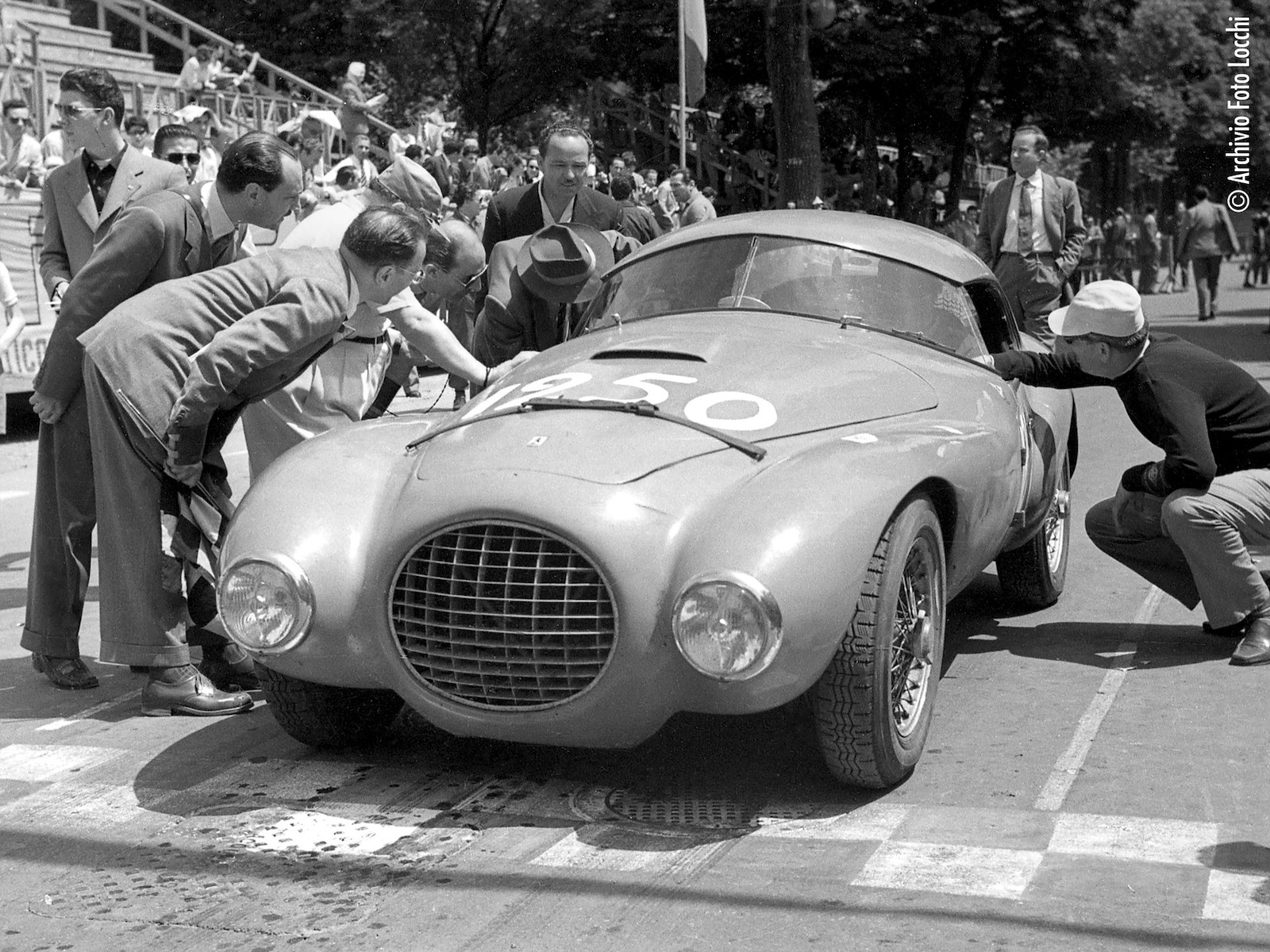
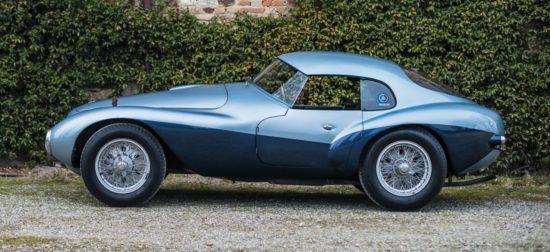
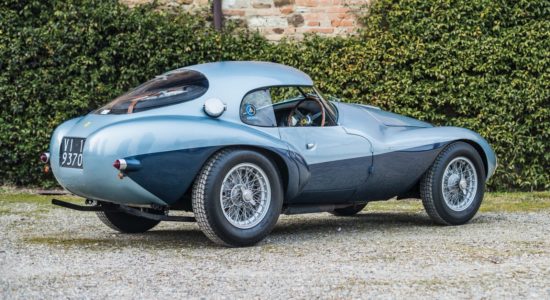

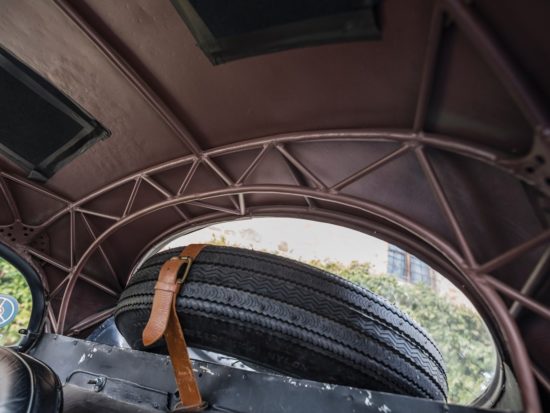
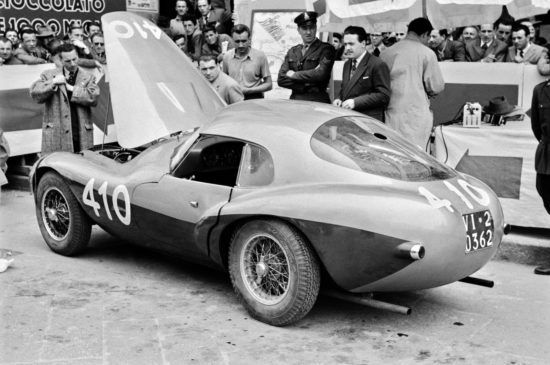
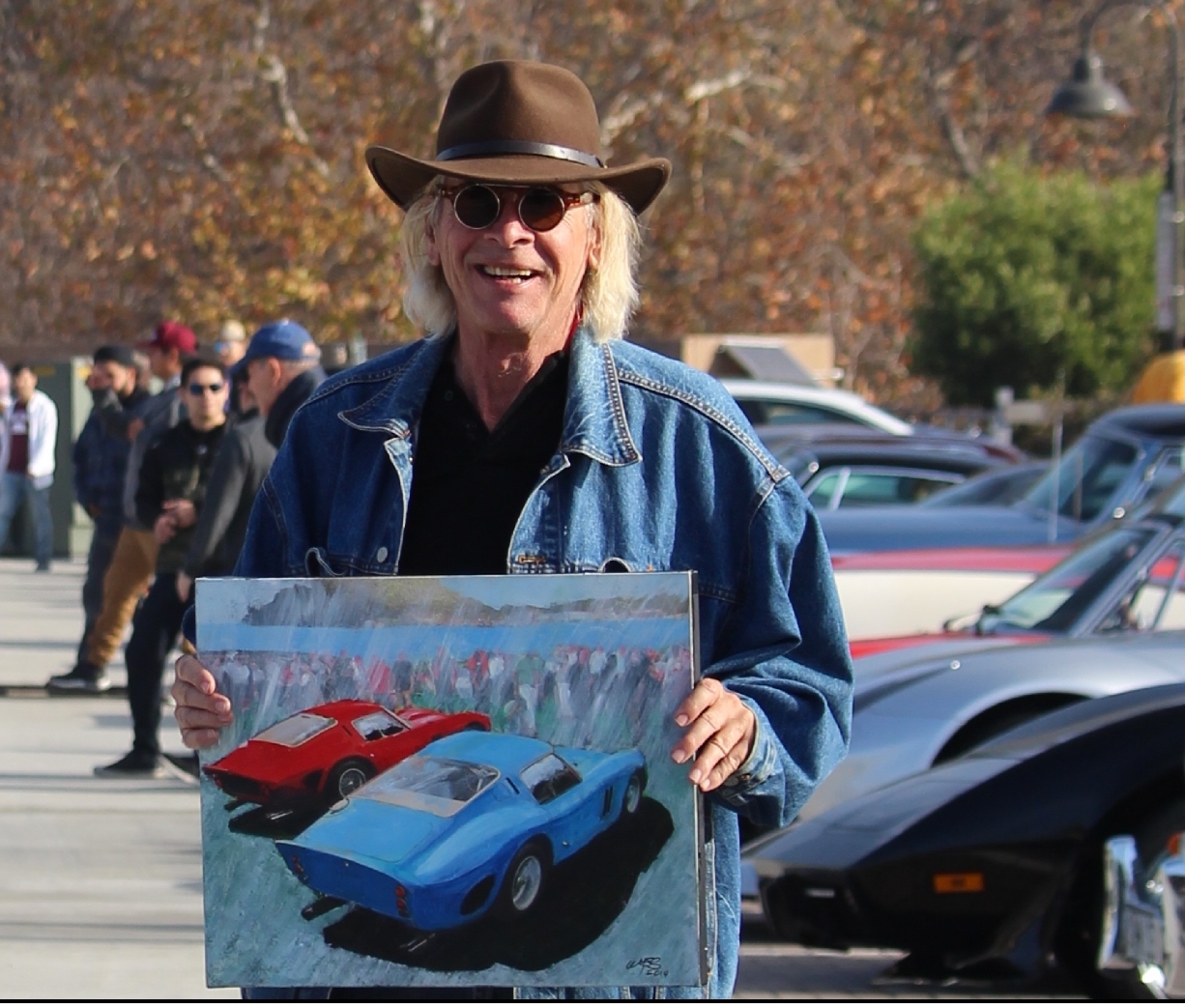



The Egg here at the Royal Concours, Hampton Court Palace, London Sept 2018
I took the pic
Owner shown as Klassische Automobile
This car was for sale in California in the early Fifties for $800. Without engine, and the small-block Chevy wasn’t known yet, so there was no handy alternative another Ferrari 12.
Yeah, that small block Chevy was a tempting solution. I almost bought a Ghia bodied Ferrari with a small block Chevy until some dastardly barn finder beat me to it after I made the mistake of taking him with me when I went to inspect it. I think it was the solution for many a Ferrari lover who could afford the car but not the engine so they could run it for years with the Chevy and someday reunite it with its engine. One fellow who did it you might have heard of, Carroll Shelby.
It is worth noting that the probable reason that Gianni Marzotto often drove in a suit is because his family was large and in charge of the wool industry in Italy. At the time this car was conceived Gianni was in his early 20’s. Franco Reggiani was also very young at the time and the two collaborated well on the radical design. It is also worth mentioning that Gianni was so proud of the car that upon it’s completion he drove it to Modena to show it to Enzo. When Enzo saw the car he commented “It is as if someone raped my daughter right before my eyes”. I guess he didn’t like it. I think it’s way cool! Another one off Ferrari with a great story behind it!
Enzo sure knew how to rain on someone’s parade. I like the story where some racer nearly died when the brakes failed on some works racing Ferrari and when the racer woke up in the hospital, there was Enzo at the end of the bed still trying to convince him his accident was driver error.
The “crash” of the original Barchetta was pictured in a Ferrari Annual of the period. The car was literally cut in half. The rebuilt chassis, instead of the curved tubing going over the differential, was made of straight tubes welded together. I doubt that DuGan drove it home, as it was non-running, with body off. I sold him a package including another treasure, the ex-Johnny vonNeuman enclosed trailer. Another car I never should have sold, although I can’t argue with you on its looks.
More pix